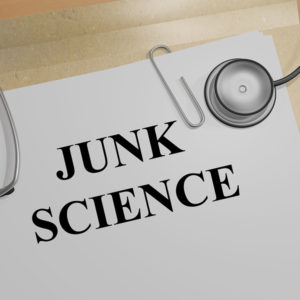For more than two decades, the federal government has doled out millions of dollars to fund university-based “children’s environmental health centers.” These centers operate under the guise of objectivity, but they are far from objective. They are instead part of a web of left-leaning environmental activist organizations that have long misused taxpayer funds to peddle junk science, leading to unwarranted government bans and activist-inspired regulations.
The Trump administration appeared to recognize this in May when the Environmental Protection Agency announced it was eliminating its half of their funding. That was a good start. However, the other half of center funding comes from the National Institutes for Environmental Health Science, a division of the National Institutes of Health, and officials there are working to continue and possibly expand such programs.
But these programs should be eliminated rather than expanded because not only do they produce junk science and spread misinformation, the policies and advice they provide actually undermine public health.
For example, the Columbia Center for Children’s Environmental Health (CCCEH), which is housed at Columbia University in New York City, is responsible for a study on the pesticide chlorpyrifos, which claimed the chemical causes developmental problems in children. The Natural Resources Defense Council and the Pesticide Action Network of North America — both listed as partner organizations of the CCCEH website — used this very study to petition EPA to ban the chemical and nearly succeeded.
However, the EPA’s Science Advisory Panel determined that the study was inappropriate for drawing conclusions because of numerous problems with the methodologies — particularly poor data collection methods. To top it off, the taxpayer-funded center refused to release its data, perhaps because they feared their findings could not be validated.
While the EPA rightly refused to ban this product, the state of California has used the CCCEH study to impose a statewide chlorpyrifos ban, which will make it difficult for California farmers there to control crop-destroying pests. Consumers will likely feel the impact in the form of higher prices for many fruits and vegetables people rely on as part of a healthy diet.
Another one of these centers is the Center for Children’s Health, the Environment, the Microbiome and Metabolomics (C-CHEM²), which is part of the nursing school at Emory University in Atlanta. C-CHEM²’s stated mission is to assess how microbes in the human body affect premature birth rates and how that might explain why African-American babies are more often premature than other babies.
Yet much of what C-CHEM² does simply involves disseminating loads of anti-chemical propaganda unrelated to its stated research mission. For example, the center hosts a flier on its website highlighting the Environmental Working Group’s “dirty dozen” list of conventionally grown fruits and vegetables, which is part of the green group’s annual misinformation campaign to vilify pesticides and lobby for bans and regulations.
These “dirty” conventionally grown fruits and vegetables — strawberries, spinach, nectarines, apples, grapes, peaches, cherries, pears, tomatoes, celery, potatoes and peppers — are allegedly dangerous because they might contain tiny traces of pesticides. EWG and C-CHEM² urge people to buy organic food instead. Never mind the fact that organic farmers use pesticides too. And never mind the fact that there’s no compelling evidence organic food is actually safer or that the tiny traces pesticide residues conventional produce poses any significant risks.
Unfortunately, such advice could easily encourage people to avoid eating these healthy food items because the organic versions are generally more expensive.
Numerous other examples of such foolish hype can be found in a brochure produced by University of San Francisco’s Program on Reproductive Health and the Environment in collaboration with groups that include the National Resources Defense Council. This brochure urges the public to “support policies that prevent pollution” including phasing out — in other words banning — chemicals.
This brochure also includes a ton of bad advice, such as “don’t use chemical tick-and-flea collars, flea baths or flea dips.” Consider the fact that fleas carry serious diseases, including typhus and the bubonic plague, while ticks can transmit Lyme disease, Babesiosis (similar to malaria), Rocky Mountain spotted fever, and many other diseases that affect both pets and humans. Asking people not to control these vectors is seriously dangerous advice.
It’s time to end this federally funded junk science and political activism. If the government spends on tax dollars on health-related research, it should focus on such things as finding cures and treatment for cancers, heart diseases and other serious illnesses that affect both children and adults. It should not be used to advance the environmental activism flavor of the day that ignores fact-based research, can destroy lives and businesses, and often leads more dangerous and potentially fatal outcomes.

